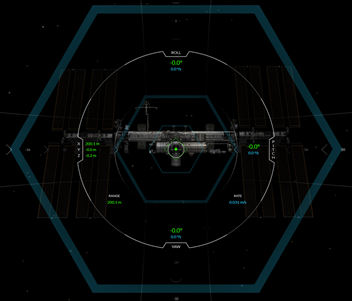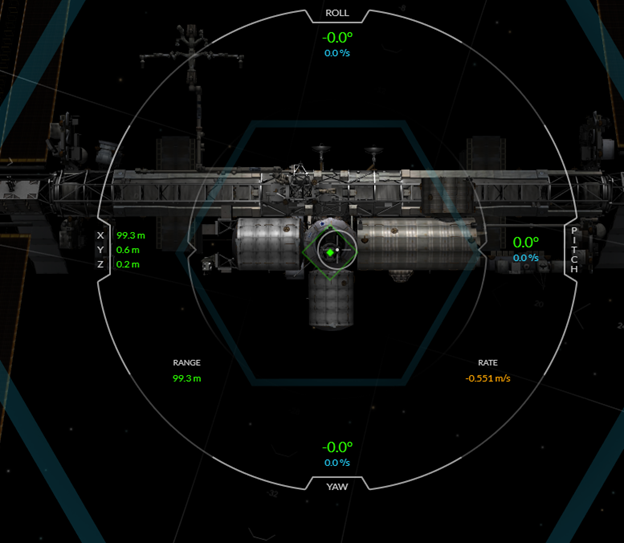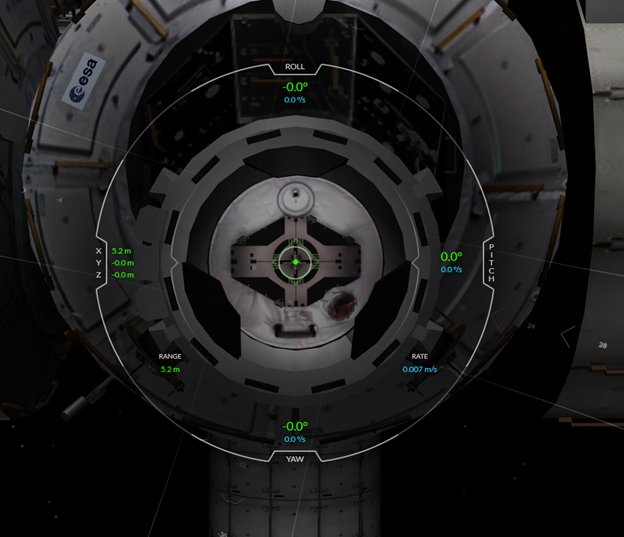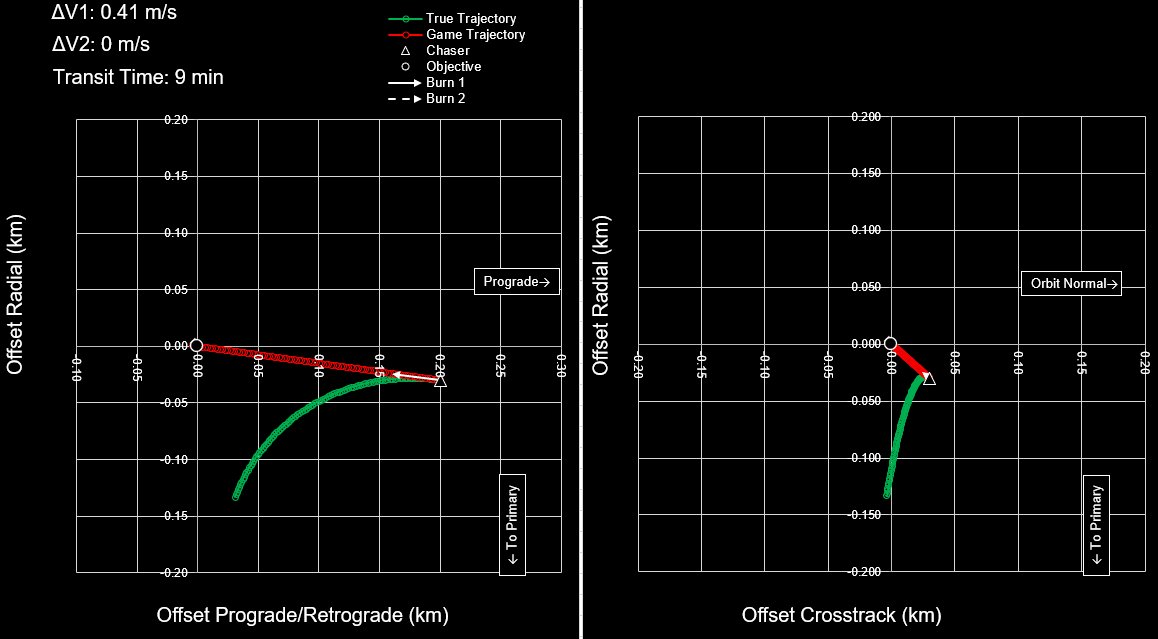This is a fun game. But... I& #39;m pretty sure the toggle to turn the gravity model from "Oblate Spheroid" to "Flat" is just cosmetic/trolling. I don& #39;t think it changes the gravity model. I submit the following as evidence... 1/7 https://twitter.com/SpaceX/status/1260269423090208768">https://twitter.com/SpaceX/st...
With the Oblate Spheroid model, let& #39;s maneuver to 200m away and null our other rates (Should look something like this.) Then let& #39;s close at 0.5 m/s. After that, we won& #39;t make any other corrections or maneuvers.
Who thinks they know what is going to happen? 2/7
Who thinks they know what is going to happen? 2/7
Intuitively, you might think the spacecraft would close distance in a straight line. And it would... assuming a Flat Earth gravity model. But in reality, in this orbit, at this closing velocity, the spacecraft would drift almost 15m out of the corridor unless corrected! 3/7
So let& #39;s try it in the simulator. Again, this is with the Oblate Spheroid gravity model, starting 200m prograde of the station and an initial impulsive burn of ~0.5 m/s. 100m out, and we can see that no drift is apparent. We are still in line. 4/7
50m out and we& #39;ve only drifted ~1m out of line. And it& #39;s here the pilot/engineer in me overwhelms the astrodynamicist, and I& #39;ll give it a short corrective burn. Because I *never* want to see a spacecraft crash into the ISS, not even in a simulator! 5/7
After that, bring the closing rate down, recenter, and dock without issue. Out of curiosity, I tried it again with the Flat Earth gravity model, but the behavior was the same. No ~15m drift. 6/7
So SpaceX: What gives? If only that toggle had been real, this could be a great way to help people develop an intuition for the complicated dynamics of proximity ops and why they are so counter-intuitive!
I would *love* to finally see a game get this right. Why not this one?
I would *love* to finally see a game get this right. Why not this one?

 Read on Twitter
Read on Twitter





![One more addendum: Here is what would really happen if you started from the game& #39;s initial conditions r=[200,12,30]m and v=[0,0,0]m/s and did *nothing*.After just 12 minutes, should have drifted ~50m above the station& #39;s VN plane (unlike in the game, where you remain ~fixed). One more addendum: Here is what would really happen if you started from the game& #39;s initial conditions r=[200,12,30]m and v=[0,0,0]m/s and did *nothing*.After just 12 minutes, should have drifted ~50m above the station& #39;s VN plane (unlike in the game, where you remain ~fixed).](https://pbs.twimg.com/media/EX7r5sqXYAEpzN6.jpg)


